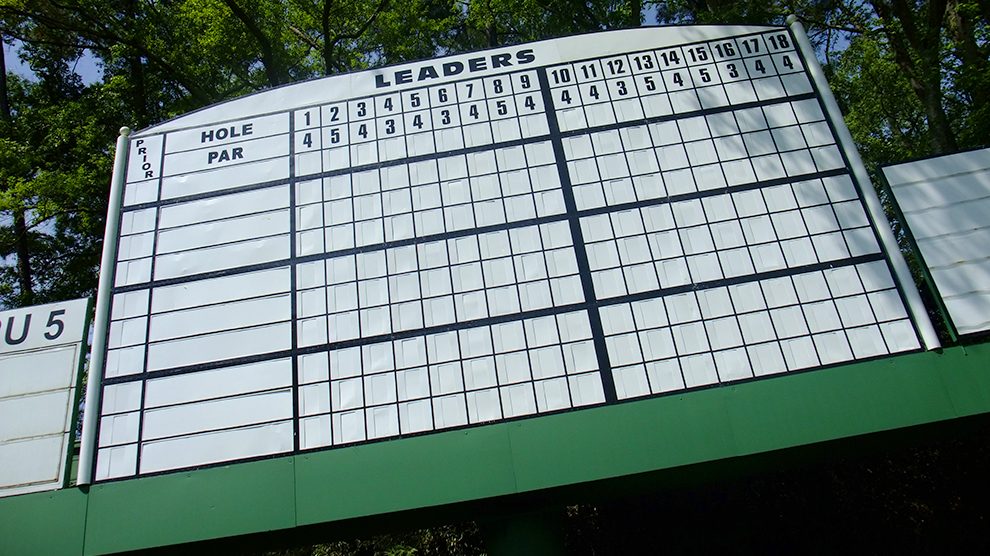When golf fans watch a golf tournament, they know they're not going to see all of the action from every player on every hole. Players tee off at different times, and they typically tee off from different starting holes.
That can make it difficult to compare golfers and their scores, but that's what a golf leaderboard tries to tell us.
On a golf leaderboard, players are listed first by their score relative to par for how much of the tournament they've played so far.
In the first round of a tournament, the leaderboard shows how players are doing against par in the first round -- which typically means a wide variety of a number of holes played.
In subsequent rounds of a tournament, the leaderboard shows how players are doing against par for the full rounds they've played so far plus the holes they've played in the current round. In the second round, that's the first round plus whatever holes played so far. In the third round, that's the first- and second-round scores combined with holes played in the third round. In the final round, the leaderboard shows the players' scores against par for the first three rounds combined and adding in holes played in the final round.
After players a listed by their score against par, players who are tied are then listed typically in the order of holes played. The player who has played the most holes is listed first, all the way down to the player who has completed the least. It's thought that a player is in better position if they're at the same score relative to par but played more holes than their competition. A player that's -7 or 7 under through 16 holes might be better off than a player who is 7 under or -7 through 14 holes. However, on an easy course or a course where the final holes offer scoring opportunities, it might be better to have four holes left than two.
Either way, the assumption is often made that a player will make pars on the remaining holes of their round, and that's then how golf fans can compare players' scores when they haven't all played the same number of holes. However, golf fans know some holes are easier or more difficult than others, so a player isn't going to simply par each remaining hole into the clubhouse to end the round.

